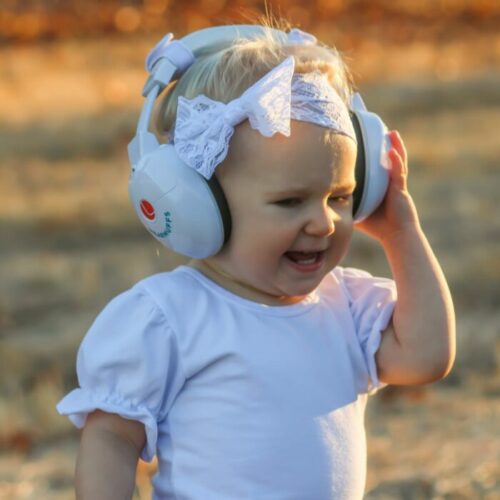When to worry about your child’s snoring
 Children can be active sleepers, prone to moving around the bed at night and making some noise. However, sometimes excessive snoring can be a sign of a deeper sleep issue.
Children can be active sleepers, prone to moving around the bed at night and making some noise. However, sometimes excessive snoring can be a sign of a deeper sleep issue.
Most of us have woken up once or twice to the sound of snorts, rasps or snores coming from someone nearby. While occasional snoring is quite normal, if you begin to hear these noises coming from your little one’s bedroom regularly, it can be a concerning sign. Sometimes, if children catch seasonal colds or become inflamed from allergies, occasional snoring or heavy breathing through the mouth happens temporarily and passes after a night or two. However, consistent laboured breathing during sleep can be a symptom of something more going on – usually a medical condition called paediatric obstructive sleep apnea. Let’s dive into how to know when your child’s snoring might be a problem and what exactly paediatric obstructive sleep apnea is.
When to worry
As parents know well, little kids can be loud sleepers, with vivid dreams and plenty of movement being completely normal. It’s worth saying that light snoring is also perfectly natural and not generally a cause for concern. In contrast, if your child or toddler snores heavily most nights and often snoozes with an open mouth or seems less refreshed than they should be during the day, it’s a good idea to talk to your doctor to rule out a deeper issue like sleep apnea. The same is true if you notice your little one taking sudden gasps during their slumber or making any other sounds that seem like they are struggling to breathe, even intermittently. As a rule of thumb, it’s always unusual if your little one snores rhythmically, regularly or like an adult.
Paediatric obstructive sleep apnea
One of the first ports of call for a child who has disturbed sleep from snoring is paediatric obstructive sleep apnea. Although it affects children of all ages, the peak incidence is between two and six years of age. The common symptoms during sleep are:
- Frequent snoring (three nights per week or more)
- Mouth breathing
- Pauses in breathing
- Laboured breathing
- Gasps, snorts and starts
- Waking frequently for short periods
- Unusual sleeping positions, such as seated or with the neck hyperextended
- Restless sleep
- Excessive sweating
Most of the time your little one will recall very few, if any, sleep disturbances in the morning. For some, the consequences of poor sleep quality or sleep disruption will manifest as daytime issues. These include:
- Hyperactivity
- Poor performance at school
- Daytime sleepiness
- Poor concentration and attention
- Behavioural problems
- Learning difficulties
- Headaches on awakening
- Mouth breathing
Causes
Most of the time this condition in children is a result of chronically enlarged tonsils and adenoids. Adenoids are patches of soft lymph tissue located in the throat, behind the nose. They can block the upper airway, making it more challenging to breathe normally while sleeping. Even though this is the most common cause, there are children with sleep apnea and normal sized tonsils and adenoids, and there are also plenty with enlarged tissues who don’t suffer from this condition. Other factors can raise the likelihood of obstructive sleep apnea too. For instance, it’s much more prevalent in children who are overweight or obese, ex-premature infants and those with asthma.
Diagnosis
A physical exam of the tonsils and a sleep study is usually how healthcare providers will diagnose sleep apnea in younger patients. The study is often an overnight test that monitors lots of different aspects of sleep health, like oxygen and carbon dioxide levels, nasal airflow, heart rate and body motions. Don’t fret about this process being scary for your little one – although it might involve cables and monitors, nothing about the test is painful or uncomfortable. One of the central measurements taken is how often your child stops breathing or breathes unusually shallowly. More than a single event per hour for any child under thirteen is a very strong indicator of sleep apnea.
Treatment
The treatment plan taken after a diagnosis has been reached depends on the severity of your child’s problem. In serious cases, the first port of call is surgery to remove the tonsils and adenoids. For healthy children who are not obese, this surgery cures sleep apnea much of the time. For kids whose issues are milder, a half year period of ‘watchful waiting’ is sometimes recommended, where a variety of lifestyle changes are advised to tackle any underlying factors that can be solved without surgical intervention.
More rarely, if little ones have other factors contributing to their sleep apnea and are not good candidates for surgery, or sadly continue to suffer symptoms post-surgery, the treatment path taken is called continuous positive airway pressure (CPAP). In this scenario, children wear a soft mask over their nose or mouth at night, connected by a tube to a box which delivers air concentrated at a higher flow rate. Essentially this keeps the airways open wherever the obstruction occurs. CPAP is an appealing option to many concerned parents as it negates the need for medication or surgery. However, it comes with certain physical challenges for younger or smaller children. Therefore, it’s important to thoroughly discuss all the possible options with a medical professional.
In the vast majority of cases, a little snoring here or there is not an issue, and is likely the result of an allergic flare-up, asthma or a blocked nose. That being said, if you notice any of the symptoms discussed in this article, or you feel worried that your little one is struggling with their sleep on a deeper level, don’t hesitate to speak with your healthcare provider for advice.
Image Credit: Shutterstock











Comments